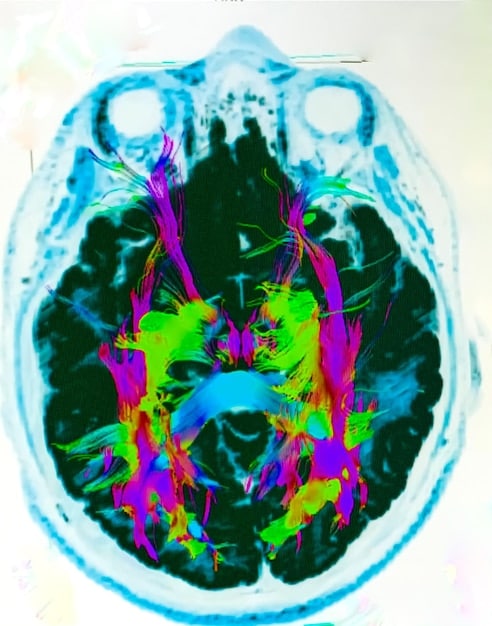Mindfulness Meditation for Chronic Pain: An Evidence-Based 2025 Analysis

Mindfulness meditation shows promise in managing chronic pain by altering pain perception and enhancing coping mechanisms; however, its effectiveness varies among individuals, warranting further research to define optimal techniques and applications.
Is mindfulness meditation effective for chronic pain management? A 2025 evidence-based analysis reveals the evolving role of this practice in alleviating persistent discomfort. With ongoing research and practical applications, let’s delve into the science-backed insights.
Understanding Chronic Pain and the Need for Management
Chronic pain is a persistent and often debilitating condition that affects millions worldwide. It extends beyond the typical healing period of an injury or illness, lasting for months or even years. Understanding its complexities is crucial to exploring effective management strategies.
Defining Chronic Pain
Chronic pain is characterized by its persistence, often lasting more than three months. Unlike acute pain, which is a response to an immediate injury, chronic pain can stem from various underlying causes, including nerve damage, inflammation, and psychological factors.
The Impact of Chronic Pain on Daily Life
Chronic pain can significantly impact various aspects of daily life, including physical functioning, emotional well-being, and social interactions. Many individuals with chronic pain experience limitations in their ability to perform daily tasks, leading to reduced productivity and overall quality of life.
- Reduced mobility and physical function
- Increased levels of stress, anxiety, and depression
- Strain on relationships and social isolation
- Difficulty sleeping and fatigue

Finding effective ways to manage chronic pain is crucial for improving the quality of life for those affected. Traditional medical treatments, such as medication and physical therapy, can be helpful but may not always provide complete relief. This has led to increased interest in complementary and alternative therapies, including mindfulness meditation.
The Basics of Mindfulness Meditation
Mindfulness meditation is a mental training practice that involves focusing on the present moment without judgment. Rooted in Buddhist traditions, it has gained widespread recognition for its potential benefits in managing stress, improving focus, and alleviating pain. Understanding the core principles is essential before applying it to chronic pain management.
What is Mindfulness?
Mindfulness is the practice of paying attention to thoughts, feelings, and sensations as they arise, without getting carried away by them. It involves observing the present moment with openness and acceptance, allowing individuals to cultivate a greater sense of awareness and equanimity.
How Mindfulness Meditation Works
Mindfulness meditation typically involves sitting or lying down in a comfortable position, focusing on the breath, and gently redirecting attention back to the breath whenever the mind wanders. The goal is not to stop thoughts or feelings but rather to observe them without judgment, allowing them to pass without getting caught up in them.
- Focusing on the breath to anchor attention
- Observing thoughts and feelings without judgment
- Cultivating acceptance and non-reactivity
- Practicing regularly to develop mindfulness skills
Regular practice of mindfulness meditation can lead to a variety of benefits, including reduced stress, improved focus, enhanced emotional regulation, and a greater sense of well-being. As a result, it has become an increasingly popular tool for managing chronic pain.
Evidence-Based Analysis: Mindfulness Meditation for Chronic Pain
Numerous studies have investigated the effectiveness of mindfulness meditation for chronic pain management. Evidence suggests that it can be a valuable tool for some individuals, although the results vary depending on the specific type of pain, the individual’s characteristics, and the mindfulness program used.
Research Findings on Pain Reduction
Several studies have shown that mindfulness meditation can lead to a reduction in pain intensity and interference. For example, a meta-analysis published in the Journal of the American Medical Association (JAMA) found that mindfulness-based interventions were associated with significant improvements in pain symptoms compared to usual care.
Mechanisms of Action: How Mindfulness Helps
The mechanisms by which mindfulness meditation reduces pain are complex and not fully understood. However, research suggests that it may involve changes in brain activity, modulation of the stress response, and enhanced coping skills. Mindfulness may also help individuals develop a different relationship with their pain, reducing its emotional impact.
- Altering pain perception by changing brain activity
- Modulating the stress response system
- Enhancing coping skills and emotional regulation
- Promoting acceptance of pain and reducing avoidance

While mindfulness meditation shows promise as a pain management tool, it is essential to recognize that it may not be effective for everyone. Some individuals may find it challenging to practice or may not experience significant pain relief. Further research is needed to identify who is most likely to benefit and which specific techniques are most effective.
Comparing Mindfulness to Traditional Pain Management Techniques
Mindfulness meditation offers a unique approach to pain management, differing significantly from traditional methods like medication and physical therapy. While traditional treatments often focus on directly reducing pain signals or improving physical function, mindfulness aims to change the individual’s relationship with pain, promoting acceptance and coping skills.
Medication vs. Mindfulness
Medications, such as opioids and nonsteroidal anti-inflammatory drugs (NSAIDs), are commonly used to manage chronic pain. While they can provide pain relief, they often come with side effects and the risk of dependence. Mindfulness meditation, on the other hand, is generally safe and has few side effects. It can also be used in conjunction with medication to enhance pain relief.
Physical Therapy vs. Mindfulness
Physical therapy focuses on improving physical function and reducing pain through exercise, stretching, and other techniques. It can be highly effective for certain types of pain, but it may not address the emotional and psychological aspects of chronic pain. Mindfulness meditation can complement physical therapy by helping individuals develop a greater awareness of their bodies and manage the psychological impact of pain.
- Mindfulness addresses emotional and psychological aspects
- Medication focuses on reducing pain signals directly
- Physical therapy aims to improve physical function
- Mindfulness can complement both medication and physical therapy
Mindfulness meditation can be a valuable addition to a comprehensive pain management plan. It offers a different perspective on pain, promoting acceptance, coping, and emotional well-being, which can enhance the effectiveness of traditional treatments.
Practical Applications: Integrating Mindfulness into Daily Life
Integrating mindfulness meditation into daily life is a gradual process that requires commitment and patience. Starting with short, regular sessions and gradually increasing the duration can help individuals develop a consistent mindfulness practice. There are various techniques and approaches to choose from, making it essential to find what works best for each individual.
Starting a Mindfulness Practice
Begin by setting aside a few minutes each day to practice mindfulness meditation. Find a quiet space where you can sit or lie down comfortably. Focus on your breath, noticing the sensation of each inhale and exhale. When your mind wanders, gently redirect your attention back to your breath.
Mindfulness Techniques for Pain Management
There are several mindfulness techniques that can be particularly helpful for managing chronic pain. These include body scan meditation, mindful movement, and mindful awareness of thoughts and feelings. Experiment with different techniques to find what resonates with you.
- Body scan meditation: Focus on different parts of the body
- Mindful movement: Engage in gentle exercises with awareness
- Mindful awareness: Observe thoughts and feelings without judgment
- Use guided meditations to enhance your practice
Consistency is key to developing a sustainable mindfulness practice. Even short, regular sessions can lead to significant improvements in pain management and overall well-being. Be patient with yourself and celebrate small victories along the way.
The Future of Mindfulness in Pain Management: A 2025 Perspective
As we move towards 2025, the role of mindfulness meditation in chronic pain management is expected to expand. Increased research, technological advancements, and greater acceptance within the medical community are likely to drive further integration of mindfulness into comprehensive pain management programs.
Technological Advancements and Mindfulness
Technological advancements, such as mobile apps and wearable devices, are making mindfulness meditation more accessible and personalized. These tools can provide guided meditations, track progress, and offer feedback, helping individuals stay motivated and engaged with their practice.
Integrating Mindfulness into Medical Settings
Growing evidence supports the integration of mindfulness-based interventions into medical settings, such as hospitals and pain clinics. Healthcare providers are increasingly recognizing the value of mindfulness as a complementary therapy for chronic pain, offering it as part of a holistic approach to patient care.
- Mobile apps providing guided meditations
- Wearable devices tracking progress
- Integration into hospital and clinic settings
- Healthcare providers recognizing its value
In the future, we can expect to see more research exploring the specific mechanisms by which mindfulness meditation reduces pain and the factors that predict who is most likely to benefit. This will help to refine mindfulness-based interventions and optimize their effectiveness for chronic pain management.
| Key Point | Brief Description |
|---|---|
| 🧘 Mindfulness Meditation | Focuses on present moment awareness without judgment. |
| 🧠 Pain Perception | Alters brain activity related to pain processing. |
| 🌱 Daily Integration | Start with short, regular practice for best results. |
| ⚕️ Future Integration | Expected to expand in medical settings with tech advancements. |
Frequently Asked Questions
▼
Mindfulness meditation is a mental training practice that involves focusing on the present moment without judgment. It helps individuals become more aware of their thoughts, feelings, and sensations as they arise.
▼
Mindfulness meditation helps by altering pain perception, modulating the stress response, and enhancing coping skills. It promotes acceptance of pain, reducing its emotional impact, and improving overall well-being.
▼
Mindfulness meditation should be seen as a complementary therapy to traditional pain management techniques. It can enhance the effectiveness of medication and physical therapy, but it may not be a complete replacement.
▼
Consistency is key. Starting with short, regular sessions (e.g., 10-15 minutes daily) is recommended. Gradually increasing the duration as you become more comfortable can lead to better pain management outcomes.
▼
Mindfulness meditation is generally safe, with few side effects. Some individuals may experience increased awareness of uncomfortable emotions or sensations, but this is usually temporary and can be managed with guidance.
Conclusion
In conclusion, mindfulness meditation effective for chronic pain management? A 2025 evidence-based analysis validates its potential. It’s a promising tool, though individual results can vary. Integrating mindfulness into pain management plans, alongside medical treatments, may improve quality of life. Continued research and personalized approaches are essential to maximize its benefits and ensure its effective application.





